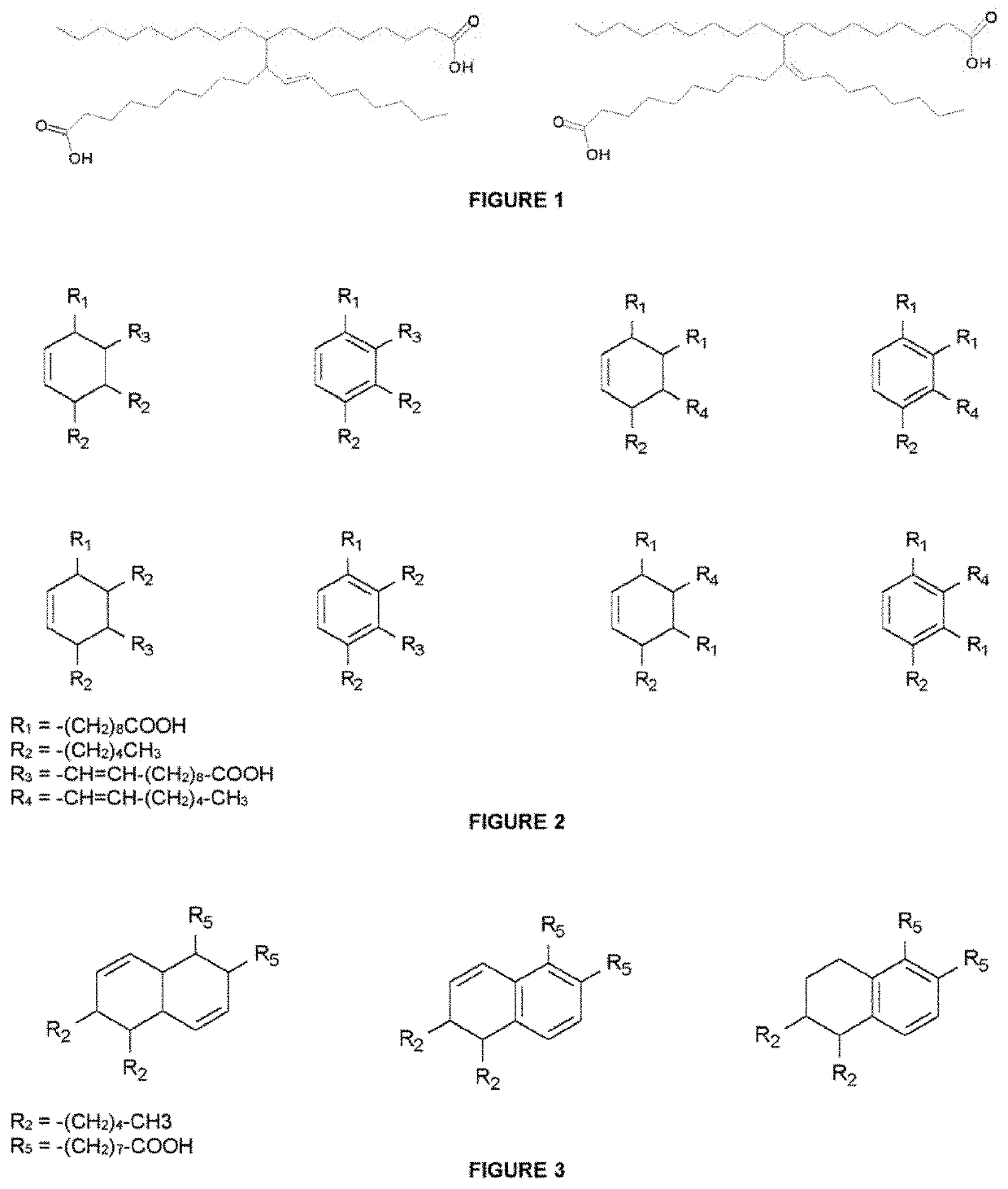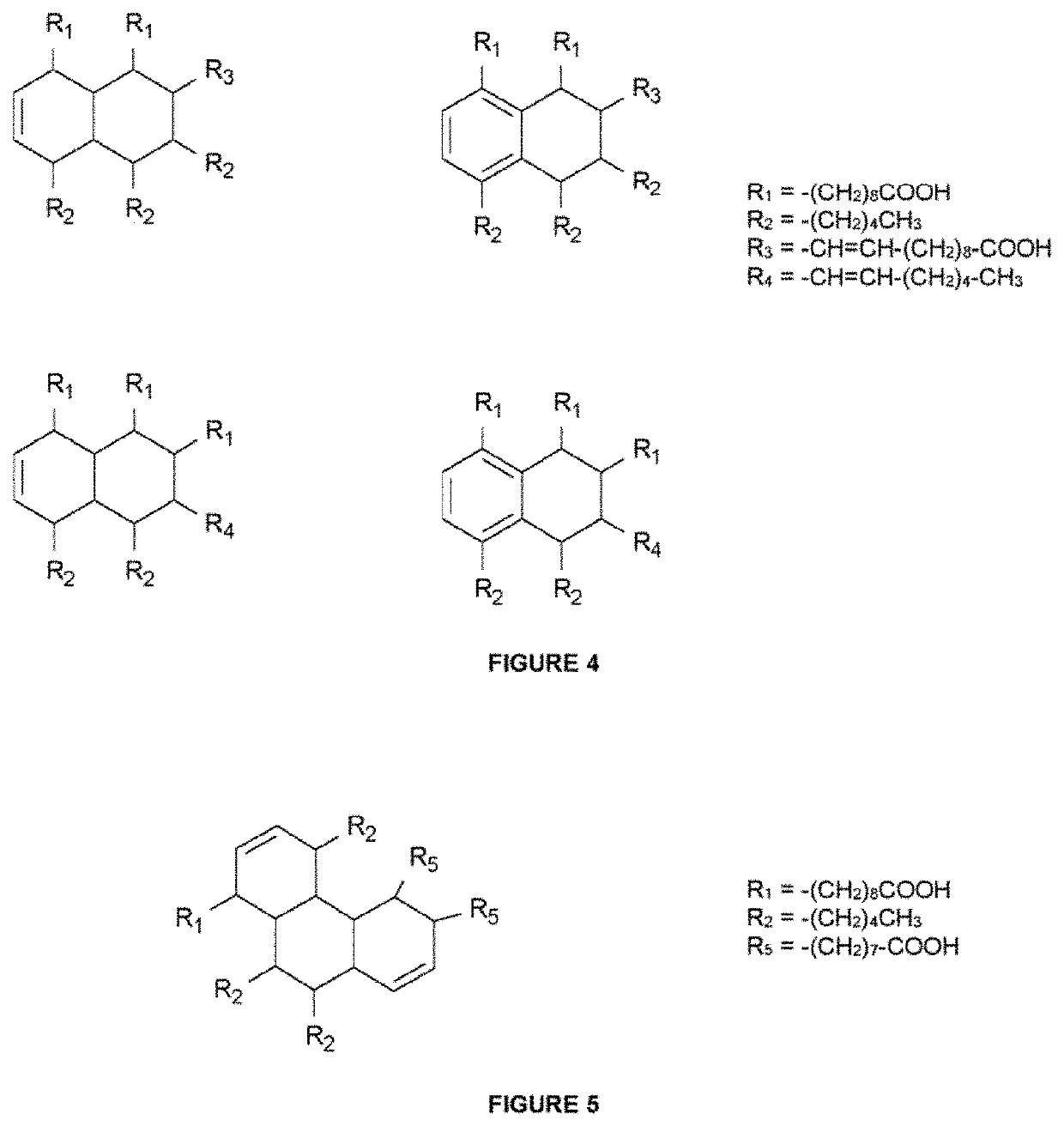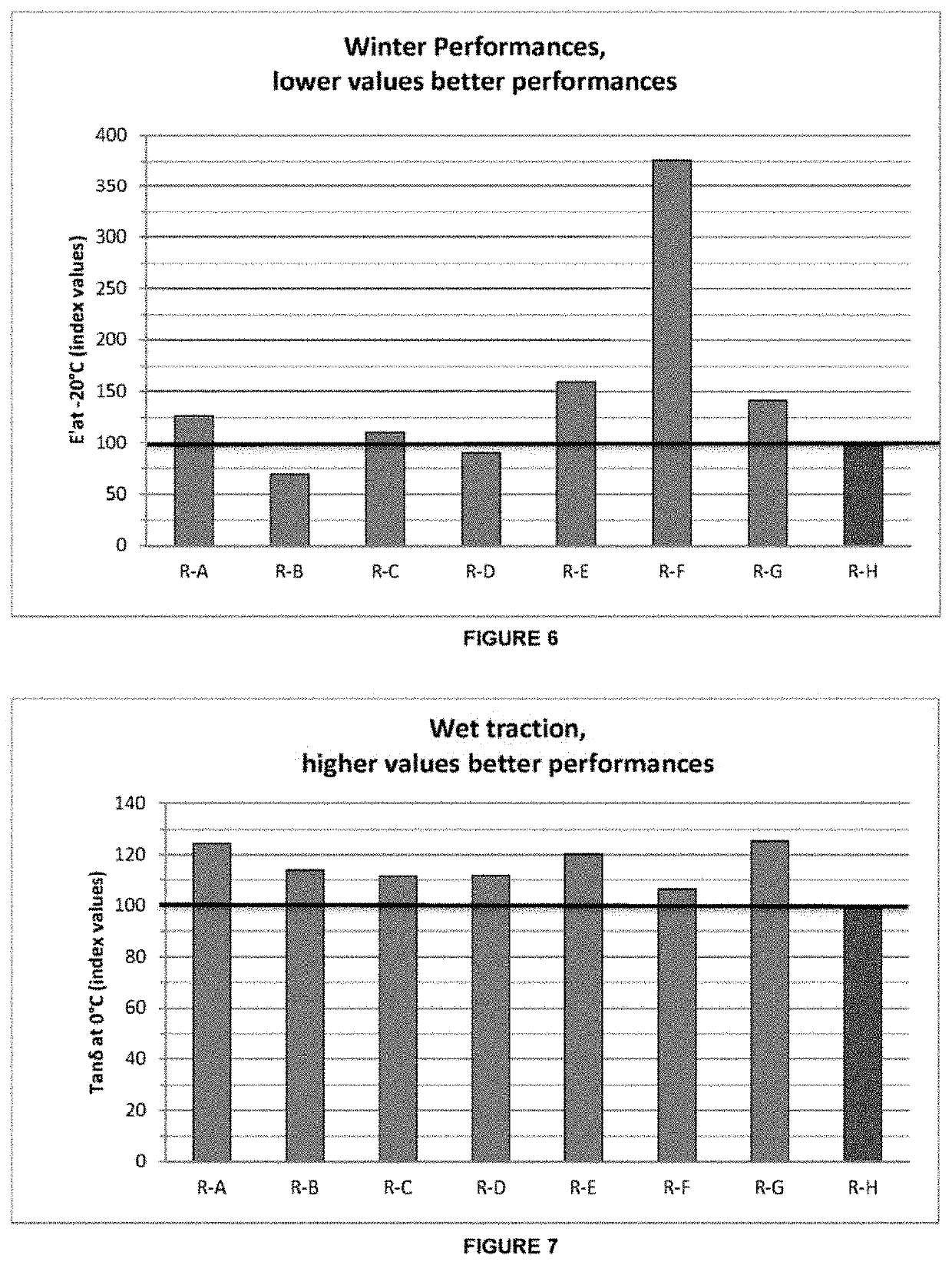Rubber composition comprising esters from renewable sources as plasticizers
- Summary
- Abstract
- Description
- Claims
- Application Information
AI Technical Summary
Benefits of technology
Problems solved by technology
Method used
Image
Examples
example 1
[0186]Pripol 1040 from Croda B.V. (400 g) (dimer and trimer acids mixture with trimer preponderance ≈75% min) was transferred together with an ion exchange resin catalyst Amberlyst 15 dry in hydrogen form (16.8 g) into a 2 L round bottomed three necked flask equipped with mechanical stirrer, a dropping funnel and a Dean-Stark trap with a tap at the bottom. The Dean-Stark trap was surmounted by a refluxing condenser equipped at the top with anhydrous calcium chloride valve. Absolute ethanol (180 mL, purity 99.5% from Merck) and toluene (220 mL, purity 99.7% from Aldrich) were added to the reaction mixture which was heated into an external oil bath kept at 112° C. Stirring was set at 450 rpm and gradually brought to 675 rpm. Heating and stirring were prolonged for 14 h and in the last hour a slight vacuum was applied (at the top of the reflux condenser) intermittently to accelerate the azeotrope distillation. A total of 215 mL or ternary azeotrope (toluene, etha...
example 2
[0187]Using the same equipment as detailed in the example 1, Pripol 1040 from Croda B.V. (403.9 g) was heated with a cationic resin catalyst Amberlyst 15 dry acid form (25.5 g), with 1-butanol (230 mL purity >99.5% from Merck) and toluene (250 mL, purity 99.7% from Aldrich). The reaction mixture was heated in an oil bath kept at 112° C. and stirring was increased gradually from 250 rpm to 600 rpm. After 6 h heating vacuum was applied intermittently starting the recovery of the toluene / water azeotrope. After 5 h further heating at 120° C. and intermittent vacuum, the degree of esterification estimated from the amount of recovered reaction water was next to the theoretical. The degree of esterification was checked also by FT-IR showing the completion of the reaction. Thus, the Amberlyst 15 resin was separated by filtration. The reaction mixture was distilled first under atmospheric pressure and then under reduced pressure reaching 20 torr and 205° C. removing ...
example 3
Trimer Ester of Amyl Alcohol
[0188]Using the same equipment as detailed in the example 1. Pripol 1040 from Croda B.V. (409.4 g) was heated with a cationic resin catalyst Amberlyst 15 dry acid form (30.0 g), amyl alcohol (260 mL technical grade from Riedel de Haen) and toluene (480 mL, purity 99.7% from Aldrich). The reaction mixture was heated in an oil bath kept at 112° C. and stirring was increased gradually from 250 rpm to 750 rpm. After 6 h heating, vacuum was applied intermittently starting the recovery of the toluene / water azeotrope. After 5 h further heating at 120° C. and intermittent vacuum, the degree of esterification estimated from the amount of recovered reaction water was next to the theoretical. The degree of esterification was checked also by FT-IR showing the completion of the reaction. Thus, the Amberlyst 15 resin was separated by filtration. The reaction product was distilled first under atmospheric pressure and then under reduced pressure reaching 20 torr and 205°...
PUM
| Property | Measurement | Unit |
|---|---|---|
| Fraction | aaaaa | aaaaa |
| Percent by mass | aaaaa | aaaaa |
| Percent by mass | aaaaa | aaaaa |
Abstract
Description
Claims
Application Information
 Login to View More
Login to View More - R&D
- Intellectual Property
- Life Sciences
- Materials
- Tech Scout
- Unparalleled Data Quality
- Higher Quality Content
- 60% Fewer Hallucinations
Browse by: Latest US Patents, China's latest patents, Technical Efficacy Thesaurus, Application Domain, Technology Topic, Popular Technical Reports.
© 2025 PatSnap. All rights reserved.Legal|Privacy policy|Modern Slavery Act Transparency Statement|Sitemap|About US| Contact US: help@patsnap.com



